Positive pressure therapy for Ménière's disease
- PMID: 36815713
- PMCID: PMC9948539
- DOI: 10.1002/14651858.CD015248.pub2
Positive pressure therapy for Ménière's disease
Abstract
Background: Ménière's disease is a condition that causes recurrent episodes of vertigo, associated with hearing loss and tinnitus. It is often treated with medication, but different interventions are sometimes used. Positive pressure therapy is a treatment that creates small pressure pulses, generated by a pump that is attached to tubing placed in the ear canal. It is typically used for a few minutes, several times per day. The underlying cause of Ménière's disease is unknown, as is the way in which this treatment may work. The efficacy of this intervention at preventing vertigo attacks, and their associated symptoms, is currently unclear.
Objectives: To evaluate the benefits and harms of positive pressure therapy versus placebo or no treatment in people with Ménière's disease.
Search methods: The Cochrane ENT Information Specialist searched the Cochrane ENT Register; CENTRAL; Ovid MEDLINE; Ovid Embase; Web of Science; ClinicalTrials.gov; ICTRP and additional sources for published and unpublished trials. The date of the search was 14 September 2022.
Selection criteria: We included randomised controlled trials (RCTs) and quasi-RCTs in adults with a diagnosis of Ménière's disease comparing positive pressure therapy with either placebo or no treatment. We excluded studies with follow-up of less than three months. DATA COLLECTION AND ANALYSIS: We used standard Cochrane methods. Our primary outcomes were: 1) improvement in vertigo (assessed as a dichotomous outcome - improved or not improved), 2) change in vertigo (assessed as a continuous outcome, with a score on a numerical scale) and 3) serious adverse events. Our secondary outcomes were: 4) disease-specific health-related quality of life, 5) change in hearing, 6) change in tinnitus and 7) other adverse effects. We considered outcomes reported at three time points: 3 to < 6 months, 6 to ≤ 12 months and > 12 months. We used GRADE to assess the certainty of evidence for each outcome. MAIN RESULTS: We included three studies with a total of 238 participants, all of which compared positive pressure using the Meniett device to sham treatment. The duration of follow-up was a maximum of four months. Improvement in vertigo A single study assessed whether participants had an improvement in the frequency of their vertigo whilst using positive pressure therapy, therefore we are unable to draw meaningful conclusions from the results. Change in vertigo Only one study reported on the change in vertigo symptoms using a global score (at 3 to < 6 months), so we are again unable to draw meaningful conclusions from the numerical results. All three studies reported on the change in the frequency of vertigo. The summary effect showed that people receiving positive pressure therapy had, on average, 0.84 fewer days per month affected by vertigo (95% confidence interval from 2.12 days fewer to 0.45 days more; 3 studies; 202 participants). However, the evidence on the change in vertigo frequency was of very low certainty, therefore there is great uncertainty in this estimate. Serious adverse events None of the included studies provided information on the number of people who experienced serious adverse events. It is unclear whether this is because no adverse events occurred, or whether they were not assessed and reported. AUTHORS' CONCLUSIONS: The evidence for positive pressure therapy for Ménière's disease is very uncertain. There are few RCTs that compare this intervention to placebo or no treatment, and the evidence that is currently available from these studies is of low or very low certainty. This means that we have very low confidence that the effects reported are accurate estimates of the true effect of these interventions. Consensus on the appropriate outcomes to measure in studies of Ménière's disease is needed (i.e. a core outcome set) in order to guide future studies in this area and enable meta-analyses of the results. This must include appropriate consideration of the potential harms of treatment, as well as the benefits.
Copyright © 2023 The Authors. Cochrane Database of Systematic Reviews published by John Wiley & Sons, Ltd. on behalf of The Cochrane Collaboration.
Conflict of interest statement
Katie Webster: none known.
Natasha A Harrington‐Benton: Natasha Harrington‐Benton is the Director of the Ménière's Society, a national charity supporting people with vestibular conditions. The Ménière's Society supports research in various ways, including distributing surveys and/or providing grant funding for projects studying vestibular conditions. Some of the studies they have previously funded may be included in the review. They do not carry out the research themselves and are not directly involved in projects.
Owen Judd: none known.
Diego Kaski: none known.
Otto R Maarsingh: none known.
Samuel MacKeith: Samuel MacKeith is the Assistant Co‐ordinating Editor of Cochrane ENT, but had no role in the editorial process for this review. He sees patients with Ménière's disease in his NHS and private practice and is the co‐director of a company providing private vestibular function testing services.
Jaydip Ray: none known.
Vincent A Van Vugt: none known.
Martin J Burton: Martin Burton undertook private practice until March 2020 and saw some patients with Ménière's disease. He is the Co‐ordinating Editor of Cochrane ENT, but had no role in the editorial process for this review.
Figures
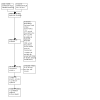


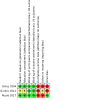
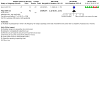
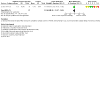
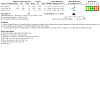
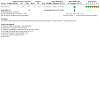
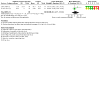
Update of
- doi: 10.1002/14651858.CD015248
References
References to studies included in this review
Gates 2004 {published data only}
-
- Gates GA, Green JD, Tucci DL, Telian SA. Intermittent transtympanic micropressure applications control the symptoms of Meniere's disease. In: Association for Research in Otolaryngology. 2003:Abstract No. 312.
-
- Gates GA, Green JD, Tucci DL, Telian SA. The effects of transtympanic micropressure treatment in people with unilateral Meniere's disease. Archives of Otolaryngology--Head & Neck Surgery 2004;130(6):718-25. - PubMed
-
- Gates GA, Verall A, Green JD, Tucci DL, Telian SA. Meniett clinical trial: long-term follow-up. Archives of Otolaryngology--Head & Neck Surgery 2006;132(12):1311-6. - PubMed
Gurkov 2012 {published data only}
-
- Gurkov R, Filipe Mingas LB, Rader T, Louza J, Olzowy B, Krause E. Effect of transtympanic low-pressure therapy in patients with unilateral Meniere's disease unresponsive to betahistine: a randomised, placebo-controlled, double-blinded, clinical trial. Journal of Laryngology and Otology 2012;126(4):356-62. - PubMed
-
- NCT00831688. Phase 3 study of efficacy of local overpressure treatment for Meniere's disease. https://clinicaltrials.gov/ct2/show/NCT00831688 (first received 29 January 2009).
Russo 2017 {published data only}
-
- Russo FY, Nguyen Y, De Seta D, Bouccara D, Sterkers O, Ferrary E, et al. Meniett device in Meniere disease: randomized, double-blind, placebo-controlled multicenter trial. Laryngoscope 2017;127(2):470-5. - PubMed
References to studies excluded from this review
Barbara 2001 {published data only}
-
- Barbara M, Consagra C, Monini S, Nostro G, Harguindey A, Vestri A, et al. Local pressure protocol, including Meniett, in the treatment of Meniere's disease: short-term results during the active stage. Acta Oto-Laryngologica 2001;121(8):939-44. - PubMed
Conde 1965 {published data only}
-
- Conde JF. Treatment of labyrinthine vertigo. Acta Oto-Rino-Laringologica Ibero-Americana 1965;16(5):511-21. - PubMed
Densert 1997 {published data only}
-
- Densert B, Densert O, Arlinger S, Sass K, Odkvist L. Immediate effects of middle ear pressure changes on the electrocochleographic recordings in patients with Meniere's disease: a clinical placebo-controlled study. American Journal of Otology 1997;18(6):726-33. - PubMed
Odkvist 2000 {published data only}
-
- Odkvist LM, Arlinger S, Billermark E, Densert B, Lindholm S, Wallqvist J. Effects of middle ear pressure changes on clinical symptoms in patients with Meniere's disease - a clinical multicentre placebo-controlled study. Acta Oto-Oaryngologica. Supplementum 2000;543:99-101. - PubMed
Odkvist 2004 {published data only}
-
- Odkvist LM, Billermark E, Sass K, Thomsen J. Pressure treatment in Meniere's disease. Journal of Vestibular Research 2004;14(2/3):166 (Abstract O146).
Richards 1971 {published data only}
-
- Richards SH. Meniere's disease. Practitioner 1971;207(242):759-66. - PubMed
Thomsen 2005 {published data only}
-
- Thomsen J, Sass K, Odkvist L, Arlinger S. Local overpressure treatment reduces vestibular symptoms in patients with Meniere's disease: a clinical, randomized, multicenter, double-blind, placebo-controlled study. Otology & Neurotology 2005;26(1):68-73. - PubMed
-
- Thomsen JC, Sass K, Odkvist L, Arlinger S. Local overpressure treatment reduces vestibular symptoms in patients with Meniere's disease--secondary publication. A clinically randomised multicenter double-blind placebo-controlled study. Ugeskrift for Laeger 2006;168(4):378-80. - PubMed
UMIN000002356 {published data only}
-
- UMIN000002356. Effect of middle ear pressure change on clinical symptoms in patients with endolymphatic hydrops of the inner ear. http://www.who.int/trialsearch/Trial2.aspx?TrialID=JPRN-UMIN000002356 2009.
UMIN000002357 {published data only}
-
- UMIN000002357. Effect of Meniett device on clinical symptoms in patients with endolymphatic hydrops. http://www.who.int/trialsearch/Trial2.aspx?TrialID=JPRN-UMIN000002357 2009.
UMIN000005544 {published data only}
-
- UMIN000005544. The benefit of tympanic ventilation tube to the patients with Ménière's disease. http://www.who.int/trialsearch/Trial2.aspx?TrialID=JPRN-UMIN000005544 2011.
UMIN000007659 {published data only}
-
- UMIN000007659. The clinical evaluation of the middle ear pressure therapy for intractable Meniere disease. http://www.who.int/trialsearch/Trial2.aspx?TrialID=JPRN-UMIN000007659 2012.
UMIN000017710 {published data only}
-
- UMIN000017710. Efficacy of middle ear pressure therapy in patients with intractable Meniere's disease and delayed endolymphatic hydrops. http://www.who.int/trialsearch/Trial2.aspx?TrialID=JPRN-UMIN000017710 2015.
References to studies awaiting assessment
Bouccara 2005 {published data only}
-
- Bouccara D, Garcia-Mace JL, Ferrary E, Sterkers O. Evaluation of the effect of the Meniett® device on vertigo frequency in patients with Meniere's disease. In: 5th International Symposium on Meniere's Disease and Inner Ear Homeostasis Disorders; 2005 April 2-5; Los Angeles (USA). 2005:150, Abstract O-29.
Feijen 2005 {published data only}
-
- Feijen R, Wit H, Albers F. Treatment of Meniere's disease with intermittent middle ear pressure. In: 5th International Symposium on Meniere's Disease and Inner Ear Homeostasis Disorders; 2005 April 2-5; Los Angeles (USA). 2005:211, Abstract O-80.
Gates 2003 {published data only}
-
- Gates GA, Green JD, Tucci DL, Telian SA. The effect of transtympanic micropressure treatment in people with unilateral Meniere's disease. In: Collegium Oto-Rhino-Laryngologicum Amicatae Sacrum Meeting; 2003 August 24-27; Helsinki (Finland). 2003:23, Abstract 50.
Gates 2005 {published data only}
-
- Gates GA, Green JD, Telian SA, Tucci DL. Long term results of usage of the Meniett device for Meniere's disease. In: 5th International Symposium on Meniere's Disease and Inner Ear Homeostasis Disorders; 2005 April 2-5; Los Angeles (USA). 2005:151, Abstract O-30.
Additional references
AAO‐HNS 1995
-
- Committee on Hearing and Equilibrium Guidelines for the Diagnosis and Evaluation of Therapy in Meniere's Disease. Otolaryngology – Head and Neck Surgery 1995;113(3):181-5. - PubMed
Ahsan 2015
-
- Ahsan SF, Standring R, Wang Y . Systematic review and meta-analysis of Meniett therapy for Meniere's disease. Laryngoscope 2015;125(1):203-8. - PubMed
Baloh 2001
-
- Baloh RW. Prosper Ménière and his disease. Archives of Neurology 2001;58:1151-6. - PubMed
Banks 2012
-
- Banks C, McGinness S, Harvey R, Sacks R. Is allergy related to Meniere's disease? Current Allergy and Asthma Reports 2012;12:255-60. - PubMed
Bruderer 2017
-
- Bruderer SG, Bodmer D, Stohler NA, Jick SS, Meier CR. Population-based study on the epidemiology of Ménière's disease. Audiology & Neuro-otology 2017;22(2):74-82. - PubMed
Carlisle 2017
-
- Carlisle JB. Data fabrication and other reasons for non-random sampling in 5087 randomised, controlled trials in anaesthetic and general medical journals. Anaesthesia 2017;72:944-52. - PubMed
Chiarella 2015
Devantier 2019
-
- Devantier L, Guldfred FL, Djurhuus BD, Handel MN, Schmidt JH, Hougaard DD, et al. Positive pressure device treatment for Meniere's disease: an overview of the current evidence and a meta-analysis. European Archives of Oto-Rhino-Laryngology 2019;276(5):1263-73. - PubMed
Gacek 2009
-
- Gacek RR. Ménière's disease is a viral neuropathy. ORL; Journal for Oto-rhino-laryngology and Its Related Specialties 2009;71(2):78-86. - PubMed
Greco 2012
-
- Greco A, Gallo A, Fusconi M, Marinelli C, Macri GF, Vincentiis M. Meniere's disease might be an autoimmune condition? Autoimmunity Reviews 2012;11(10):731-8. - PubMed
Hallpike 1938
Handbook 2011
-
- Higgins JPT, Green S (editors). Cochrane Handbook for Systematic Reviews of Interventions Version 5.1.0 [updated March 2011]. The Cochrane Collaboration, 2011. Available from training.cochrane.org/handbook/archive/v5.1/.
Handbook 2021
-
- Higgins JP, Thomas J, Chandler J, Cumpston M, Li T, Page MJ, et al, editor(s). Cochrane Handbook for Systematic Reviews of Interventions Version 6.2 (updated February 2021). Cochrane, 2021. Available from www.training.cochrane.org/handbook.
Harcourt 2014
-
- Harcourt J, Barraclough K, Bronstein AM. Meniere's disease. BMJ 2014;349:g6544. - PubMed
Harris 2010
-
- Harris JP, Alexander TH. Current-day prevalence of Ménière’s syndrome. Audiology & Neuro-otology 2010;15(5):318-22. - PubMed
Holmberg 2019
-
- Holmberg J, Amesti M, Rosenbaum A, Winter M . Positive pressure therapy for Meniere's disease [Terapia con presion positiva para enfermedad de Meniere]. Medwave 2019;19(3):e7610. - PubMed
Honrubia 1996
-
- Honrubia V, Bell TS, Harris MR, Baloh RQ, Fisher LM. Quantitative evaluation of dizziness characteristics and impact on quality of life. American Journal of Otology 1996;17:595-602. - PubMed
Huppert 2010
Jacobsen 1990
-
- Jacobsen GP, Newman CW. The development of the Dizziness Handicap Inventory. Archives of Otolaryngology--Head and Neck Surgery 1990;116(4):424-7. - PubMed
Jacobsen 1998
-
- Jacobsen GP, Calder JH. A screening version of the Dizziness Handicap Inventory. American Journal of Otology 1998;19(6):804-8. - PubMed
Lopez‐Escamez 2015
-
- Lopez-Escamez JA, Carey J, Chung W, Goebel JA, Magnusson M, Mandalà M, et al. Diagnostic criteria for Menière’s disease. Journal of Vestibular Research 2015;25:1-7. - PubMed
Miekle 2012
-
- Meikle MB, Henry JA, Griest SE, Stewart BJ, Abrams HB, McArdle R, et al. The Tinnitus Functional Index: Development of a new clinical measure for chronic, intrusive tinnitus. Ear and Hearing 2012;33(2):153-76. - PubMed
Murphy 1999
-
- Murphy MP, Gates GA. Measuring the effects of Meniere's disease: results of the Patient-Oriented Severity Index (MD POSI) Version 1. Annals of Otology, Rhinology and Laryngology 1999;108(4):331-7. - PubMed
Newman 1996
-
- Newman CW, Jacobsen GP, Spitzer JB. Development of the Tinnitus Handicap Inventory. Archives of Otolaryngology--Head and Neck Surgery 1996;122(2):143-8. - PubMed
Requena 2014
-
- Requena T, Espinosa-Sanchez JM, Cabrera S, Trinidad G, Soto-Varela A, Santos-Perez S, et al. Familial clustering and genetic heterogeneity in Meniere’s disease. Clinical Genetics 2014;85:245-52. - PubMed
RevMan 2020 [Computer program]
-
- Review Manager (RevMan). Version 5.4. Copenhagen: Nordic Cochrane Centre, The Cochrane Collaboration, 2020.
Sakikawa 1997
-
- Sakikawa Y, Kimura RS. Middle ear overpressure treatment of endolymphatic hydrops in guinea pigs. Journal for Oto-Rhino-Laryngology and its Related Specialties 1997;59:84-90. - PubMed
Söderman 2002
-
- Söderman AH, Bagger-Sjöbäck D, Bergenius J, Langius A. Factors influencing quality of life in patients with Ménière's disease, identified by a multidimensional approach. Otology & Neurotology 2002;23(6):941-8. - PubMed
Syed 2015
-
- Syed MI, Rutka JA, Hendry J, Browning GG . Positive pressure therapy for Meniere's syndrome/disease with a Meniett device: a systematic review of randomised controlled trials. Clinical Otolaryngology 2015;40(3):197-207. - PubMed
Tesio 1999
-
- Tesio L, Alpini D, Cesarani A, Perucca L. Short form of the Dizziness Handicap Inventory: construction and validation through Rasch analysis. American Journal of Physical Medicine and Rehabilitation 1999;78(3):233-41. - PubMed
Tjernström 1977
-
- Tjernström Ö. Middle ear pressure on the inner ear. Acta Oto-Laryngologica 1977;83(1-6):11-5. - PubMed
Tyrrell 2016
van Sonsbeek 2015
Wallace 2017
Wang 2019
Webster 2021a
Yamakawa 1938
-
- Yamakawa K. Hearing organ of a patient who showed Meniere's symptoms (in Japanese). Journal of the Otolaryngological Society of Japan 1938;44:2310-2.
Yardley 1992a
-
- Yardley L, Putman J. Quantitative analysis of factors contributing to handicap and distress in vertiginous patients: a questionnaire study. Clinical Otolaryngology 1992;17:231-6. - PubMed
Yardley 1992b
-
- Yardley L, Masson E, Verschuur C, Haacke N, Luxon L. Symptoms, anxiety and handicap in dizzy patients: development of the vertigo symptom scale. Journal of Psychometric Research 1992;36(8):731-41. - PubMed
Yardley 1998
Zeng 2021
-
- Zeng L, Brignardello-Petersen R, Hultcrantz M, Siemieniuk RSC, Santesso N, Traversy G, et al. GRADE guidelines 32: GRADE offers guidance on choosing targets of GRADE certainty of evidence ratings. Journal of Clinical Epidemiology 2021;137:163-75. - PubMed
Zhang 2016
-
- Zhang SL, Leng Y, Liu B, Shi H, Lu M, Kong WJ . Meniett therapy for Meniere's disease: an updated meta-analysis. Otology & Neurotology 2016;37(3):290-8. - PubMed
References to other published versions of this review
Publication types
MeSH terms
LinkOut - more resources
Full Text Sources
Medical
Research Materials
Miscellaneous

